The best self-pollinated cucumber varieties for pickling and canning
Not all varieties of cucumbers are suitable for preparing blanks for the winter: some quickly deteriorate, others turn into a tasteless slippery mass.
The article will help you choose the most popular varieties and hybrids of cucumbers for pickling and canning, which will retain their qualities in jars for a long time, will delight you with excellent taste and aesthetic appearance.
The content of the article
Features of choosing a variety of cucumbers for pickling
Summer preparations of fragrant crispy cucumbers - table decoration in winter. Experienced housewives know that a successful recipe is not enough to get a tasty product. Not every cucumber is suitable for pickling and canning.
There are three types of cucumber varieties:
- Salad varieties... These cucumbers are fragrant, juicy, and have a thin skin. But during heat treatment, the skin and fruit bodies soften, the aroma is lost, the taste deteriorates.
- Pickled cucumbers dense pulp, the skin does not soften under the influence of temperature, passes through salt, promotes uniform salting of the product.
- Universal varieties cucumbers are suitable for both salads and pickling.
You cannot use salad cucumbers for preparations.... Only pickling and universal varieties are harvested.
The best self-pollinated cucumber varieties for blanks
When choosing a variety of cucumbers, take into account yield, taste, ripening terms.
Courage F1
A powerful plant, the central stem is not limited in growth, can reach 3.5 m in length. Female flowering type, does not require pollination... Forms ovaries in the form of a bouquet of 4-8 flowers on lateral lashes.
Fruit properties:
- weight 130 g;
- length 15 cm;
- diameter 4 cm;
- the shape of the fruit is a cylinder with small edges;
- yield - 20 kg per m².
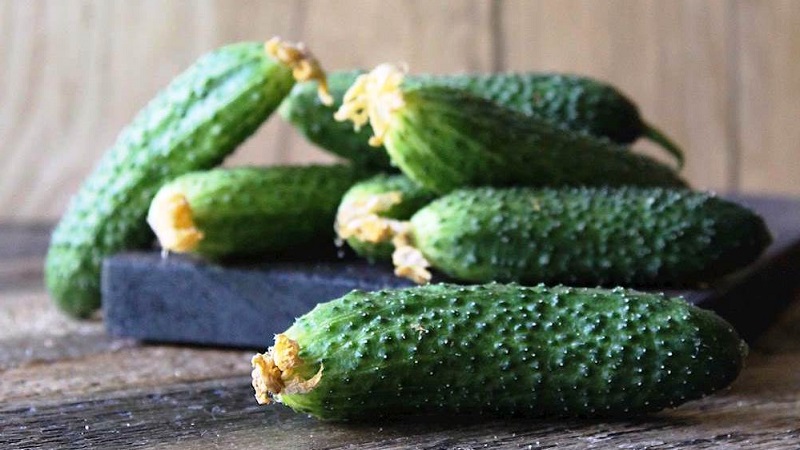
Dark green cucumbers Courage have thin skin, its surface is lumpy with light thorns. The dense juicy pulp has a sweetish taste.
Features of the hybrid:
- exactingness to the quality of lighting - yield decreases in the shade;
- with insufficient or irregular watering, bitterness appears in the fruits;
- acidic soils impair growth, deoxidation is required.
F1 white sugar
Fruits have an unusual milky color... Cucumbers ripen 46-50 days after germination. They have dense juicy flesh. It tastes sweet, without bitterness.
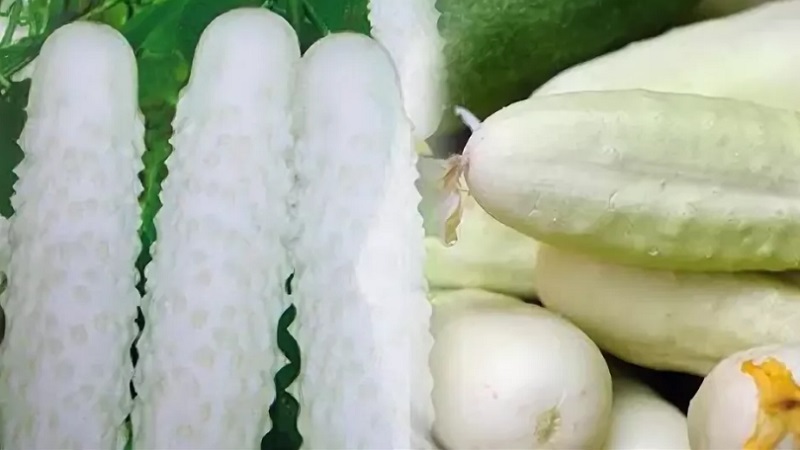
Fruit length 10-12 cm, there are rare tubercles on the skin.
Hybrid properties:
- unusual color of cucumbers;
- drought tolerance;
- can tolerate cold snaps;
- unpretentious care;
- disease resistance.
This the hybrid is sensitive to feeding and loosening.
Ginga F1
Mid-season hybrid... On lashes up to 2 m long, cucumbers are often located in a cylindrical shape, rounded at the edges, slightly ribbed. Ginga has fruits of dark green color, lumpy, with white thorns and short light stripes. There are no voids in the body of a fruit. The pulp is elastic, juicy, crispy, aromatic.
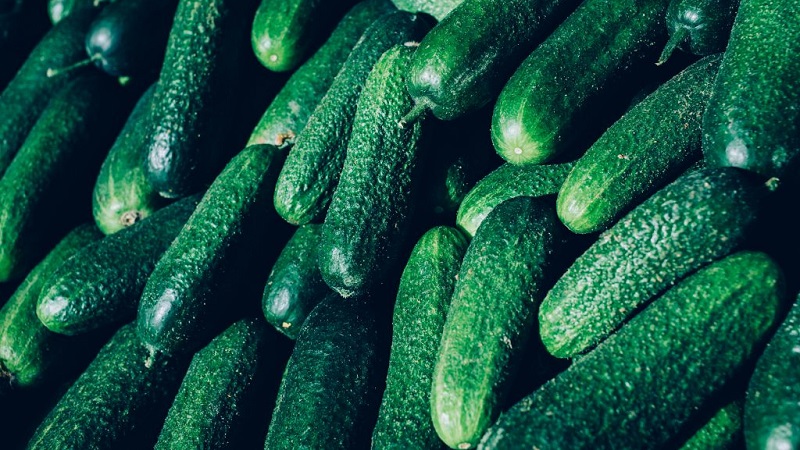
On average, fruits have:
- weight 85 g;
- length 10.5 cm;
- diameter 3 cm.
Ginga F1 hybrid properties:
- female type of flowering;
- immunity to brown spot, powdery mildew, cucumber mosaic;
- universal use of the crop.
Bush
The bee-pollinated variety Kustovaya was bred in 1980.
Interesting. Gardeners believe that the "old" varieties have a "real" taste when salted, more aromatic than the new hybrids.
Several shoots go from the root of the plant, forming a bush. The length of the lashes is not more than half a meter. An ovary is formed near each leaf. Flowers are more often female. The crop is harvested in 45-50 days. The plant gives the main harvest within 3 weeks. Productivity 5-6 kg per 1 sq. m.
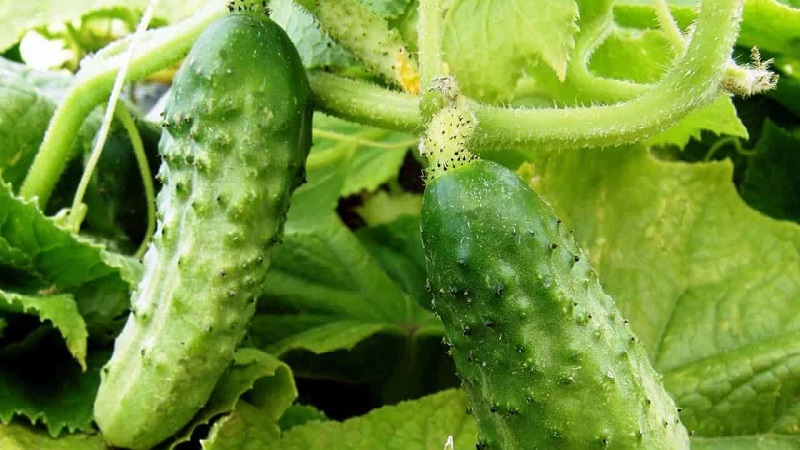
Vegetable length 8-12 cm, weight about 100 g... The skin on the cucumbers is delicate and thin. The taste is rich and aromatic. Insufficient watering may cause a bitter taste.
Attention! Regular drip irrigation prevents the development of diseases and the occurrence of cucumber bitterness.
Advantages of Kustovoy:
- does not require time and effort to form a bush;
- unpretentious to soil, heat, winds;
- yields the harvest before the summer heat begins;
- compact bush does not require abundant watering, takes up a small area;
- the ability to get seeds from your harvest.
Disadvantages of Bush:
- due to the lack of self-pollination, it is not grown in greenhouses;
- inferior to hybrids in yield.
Hector F1
Differs in early maturity and high yield... The first fruits ripen 30 days after germination.
The bush is compact, the height does not exceed 80 cm. Many ovaries are formed on each bush. Abundant fruiting can continue until early autumn. On the open ground from 1 m², you can harvest 4-6 kg of cucumbers, and on a trellis in a greenhouse - up to 16 kg.
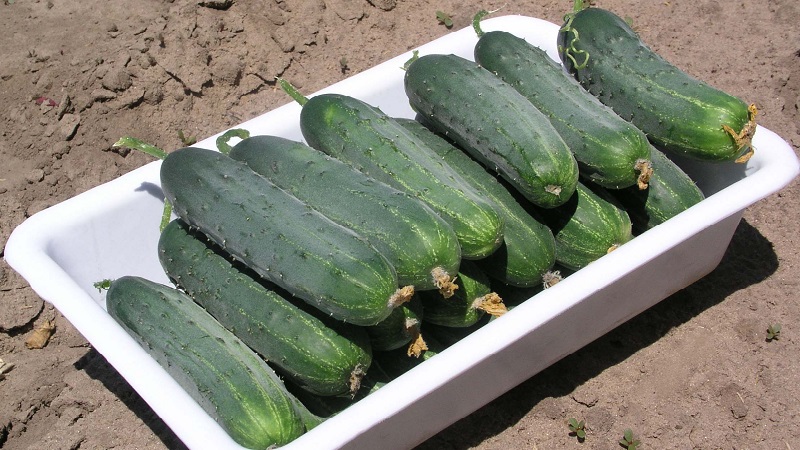
Fruits are sized:
- length 10-15 cm;
- diameter 3 cm;
- weight 100-110 g.
The green skin is covered with a thin waxy coating. On the surface there are large tubercles with small white spines. The cucumbers are juicy, the flesh is crispy. The fruits are not bitter, the structure is dense, without cavities. Hector F1 used for canning and consumed fresh.
Advantages of the Hector F1 hybrid:
- early maturation;
- self-pollination;
- cold resistance;
- undemanding to the care and composition of the soil;
- compact size of the bush;
- fruiting is long and abundant;
- fruits do not grow more than 15 cm in length;
- disease resistance.
Disadvantages of a hybrid:
- thickening of the skin if the crop is not harvested on time;
- with irregular watering, bitterness appears
Vyaznikovsky
This is one of the oldest varieties, tested by more than one generation and widespread everywhere.

Vyaznikovsky characteristics:
- fruits ripen in 40-45 days;
- insect pollination is necessary;
- yield up to 3.5 kg from 1 m²;
- bushes of medium size, strong lashes, 100-160 cm long;
- the ovary is formed in bunches;
- resistant to bacteriosis and powdery mildew;
- tolerates temperature drops;
- withstands slight frosts.
Cucumber varieties Vyaznikovsky have an elongated ovoid shape... The fruits are light green with small tubercles and black thorns. The core of the fruit is dense, crispy, aromatic, without bitterness.
Dimensions: average length 9-11 cm, weight 80-130 g.
Goosebump F1
Hybrid Goosebump early ripening. Fruiting begins at 43-46 days after the start of the growing season and can continue until autumn.
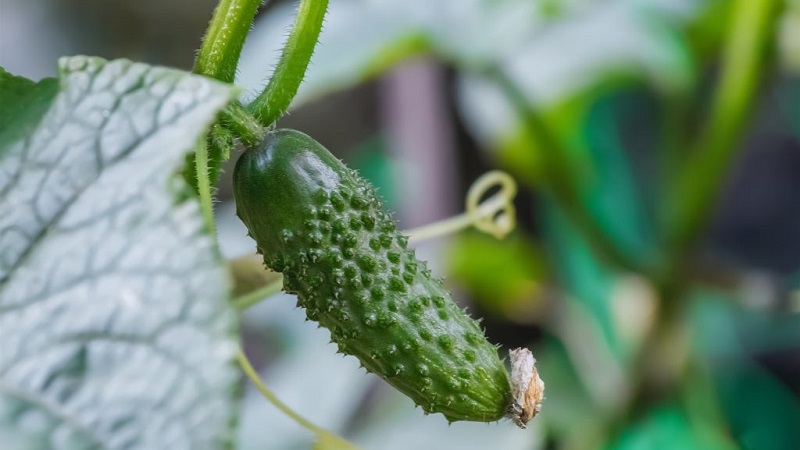
Plants form 4-6 branches, leaves are thickened... The bush needs to be shaped. At least three ovaries develop in the nodes.
Fruits reach size:
- weight 90-100 g;
- length 11 cm;
- diameter 3.5 cm.
The shape of the fruit is cylindrical... The color gradually changes from bright green to dark near the stalk. Light stripes are visible at the tip of the vegetable.
Properties of the hybrid Goosebump F1:
- high yield, stable;
- insects are not needed for pollination;
- early and long fruiting;
- use of the crop for harvesting and fresh consumption;
- female type of flowering;
- immunity to powdery mildew and cladosporiosis.
disadvantages:
- the need for plant formation;
- inability to get seeds from their harvest.
Prestige F1
Hybrid Prestige early ripening. Plant up to 2 m long, compact. The crop ripens in 42-45 days from the beginning of the growing season... The ovaries develop in a knot in a bouquet of up to 4 pcs.
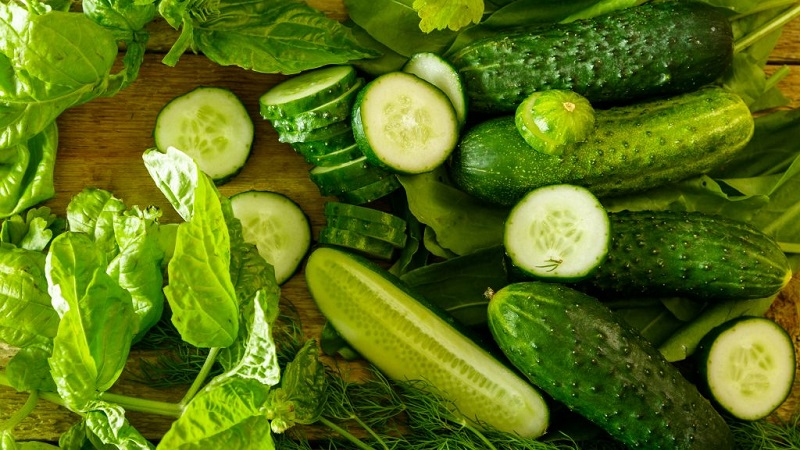
The hybrid is characterized by abundant long-term fruiting... The yield is 25 kg per 1 m².
The taste of the cucumber is sweet, without bitterness, with a pleasant crunching. The fruits are cylindrical in shape, the skin is thin, with small tubercles.Does not form voids in the fruiting body.
Features of the Prestige F1 hybrid:
- female type of flowering;
- plants tolerate shading;
- disease resistance;
- cucumbers do not turn yellow during storage.
Disadvantage - poor tolerance to frost and sudden temperature fluctuations.
Siberian salting F1
This is a new hybrid cucumbers for pickling.
Plants do not require bee pollination. Fruiting begins 42-46 days after the first shoots appear... The ovaries are formed in bunches. The fruits have a cylindrical shape with weak edges, the surface is small tuberous, with white thorns. The skin is light green.
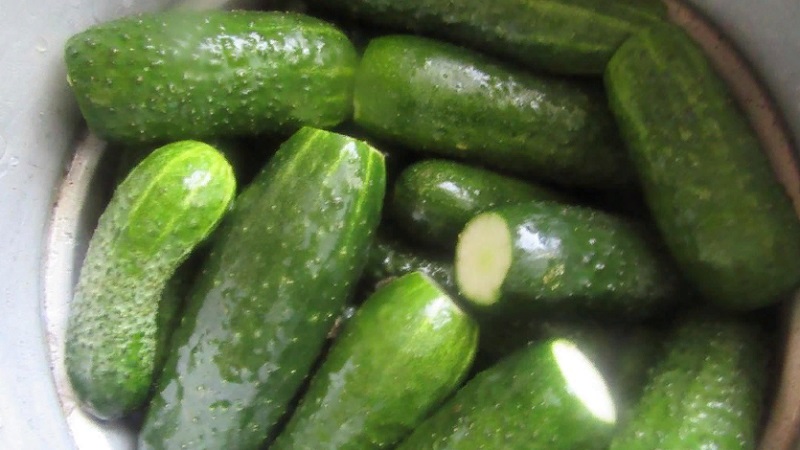
Fruit sizes: length 6-8 cm, weight 55-65 g. The flesh of the cucumbers is dense, with a crunch, does not have voids and a bitter taste.
Characteristics of the Siberian saline F1:
- yield up to 10 kg per lash;
- fruits do not outgrow;
- plants tolerate adverse weather changes;
- not picky about soil and care.
Cupid F1
A hybrid of domestic selection, created in 2000.
Early ripening, yields a harvest 37-40 days after germination... For the first month, it gives away almost the entire harvest. Cucumbers grow along the entire length of the lash, 1-2 ovaries in each leaf axil.
The peculiarity of this hybrid Amur - branching is self-regulating. After the return of the harvest, the side shoots begin to grow in the main lash. On them, fruiting continues, but not so abundantly.

Pollination of flowers occurs without insects. Cucumbers reach 12-15 cm in length and weigh 90-100 g... They are delicious fresh and canned.
Advantages of the Amur F1 hybrid:
- early rapid maturation;
- the formation of bundle ovaries;
- universal use of fruits;
- intense fruiting;
- immunity to powdery mildew, root rot, cladosporium and mosaic;
- resistance to temperature drop.
Reported disadvantages:
- short period of active fruiting;
- cucumbers outgrow, losing their taste.
How to choose the best self-pollinated early maturing variety for pickling
When choosing a variety or hybrid for growing, first of all, pay attention to culture requirements for soil, humidity, temperature conditions and correlate with the characteristics of their garden plot and region of residence.
Early ripening pickling varieties include those in which the growing season before fruiting is 35-45 days.
Self-pollinated hybrids are recommended for salting.:
- Hector F1 - 30-36 days;
- Courage F1 - 38-44 days;
- Cupid F1 - 37-40 days;
- F1 Prestige - 42-45 days.
Mid-season
Mid-season pickling hybrids give higher quality fruits for harvesting for the winter compared to early ripening... The growing season before harvest is 45-50 days.
Choose the following hybrids:
- Ginga F1;
- F1 white sugar;
- Goosebump F1;
- Siberian salting F1.

Long-term fruiting
Late varieties of cucumbers most suitable for canning and salting... The taste of these products is maintained throughout the year. The structure of the fruit is not disturbed during heat treatment.
Cucumbers that bear fruit until late autumn:
- Everyone is the envy of F1;
- Magdalena F1.
For greenhouses
For growing self-pollinated pickling cucumbers in greenhouses, hybrids are best suited. They resistant to many diseases, have a high yield and undemanding to care.
Hybrids will do:
- Siberian salting F1;
- Goosebump F1;
- Hector F1.
For open ground
Self-pollinated cucumbers for open ground are resistant to temperature extremes. Plants must tolerate dry periods well and be immune to disease:
- Nezhinsky;
- Vyaznikovsky;
- Kustovoy.
The choice of varieties depending on the region of cultivation
Breeders are working on plant adaptation to specific climatic conditions.
The hybrid Murashka F1 is zoned for the northern regions of Siberia. F1 Prestige - for Western Siberia and Central Black Earth regions. Siberian saline F1 was developed specifically for areas of risky farming, resistant to adverse weather conditions.
Reviews of summer residents
Summer residents try to grow different varieties and hybrids in order to find the one suitable for the climate of their region, and share their recommendations.
Victor, Ufa: “Good cucumbers Prestige F1. Delicious and not too capricious. I have been growing them for the fifth year already and have not noticed any problems, so I can safely recommend them to everyone, you will not regret ".
Andrey, Sortavala: “Last year I planted Amur F1, I liked it. Very hardy and almost does not give stepchildren, everything is on the main stem ".
Sergey, Vologda: “On manure beds without a film coating, the seedlings of“ Gingo F1 ”endured the nighttime cold snap to + 4 ° С without losses. The harvest is incredible. Good for pickling in tubs ".
Conclusion
The choice of a variety of cucumbers for pickling is no less important than full care of plants and adherence to agricultural technology. Having planted a crop of a correctly selected variety on the site, the gardener will provide himself with high-quality raw materials for pickles, marinades and other preparations for the winter.